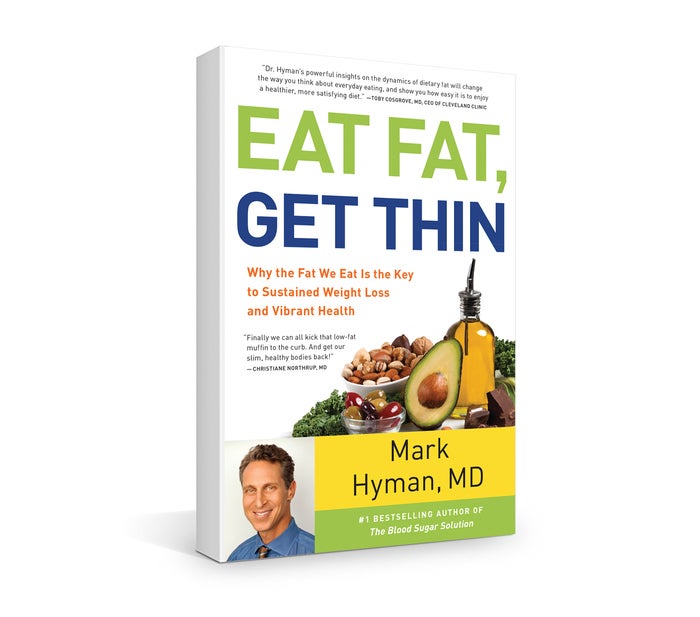
“Dr. Hyman, you often talk about superfoods and their benefits,” writes this week’s house call. “Can you share some of your favorites?”
I realize “superfood” carries a certain hype, but some foods do earn that status. Food is medicine. And some foods are more powerful medicines than others! Food is the most powerful tool to create optimal health. Food is the first and most powerful drug in my arsenal to treat patients.
I’ve discussed numerous superfoods and you how to get them into your diet in The 10- Day Detox, Eat Fat, Get Thin, and my other programs. Here, I share five superfoods I frequently enjoy that you should also incorporate into your eating plan:
1. Seeds. My three favorite seeds are chia, hemp and flaxseeds. You can add all three super seeds to smoothies, puddings or on top of coconut yogurt with berries. Let’s look at their benefits.
- Chia seeds provide an excellent source of anti-inflammatory omega-3 fatty acids that have numerous benefits, including glowing skin and mental clarity. Just one ounce of chia seeds packs a whopping 10 grams of fiber. Its insoluble fiber acts as a prebiotic that feeds friendly gut bacteria and ferments into short-chain fatty acids to support gut health. Chia seeds also contain more protein than most plant foods. And they contain more calcium than milk.
- Hemp seeds provide healthy omega-3 fats, protein, B vitamins, magnesium, zinc, and iron.
- Flaxseeds are another great source of omega-3 fats, dietary fiber, and essential vitamins and minerals. Flaxseeds have powerful, anti-cancer, hormone-balancing phytonutrients called lignans. Freshly ground flaxseed sprinkled into a smoothie is an excellent way to ease constipation.
2. MCT oil. Medium-chain triglycerides or MCTs are a special type of fatty acid derived from coconut oil. You can get them in coconut oil or as a stand-alone oil. I’ve written about how studies show MCT oil can help with weight loss, cognitive ability and much more. This super fuel becomes an instant-energy source because MCTs get rapidly burned and metabolized very efficiently, absorbing directly into the gut and then liver, so MCTs don’t get stored as fat. You can add MCT oil to smoothies, coffee or veggies. MCTs also provide powerful antioxidant support to strengthen the immune system. Animal studies show MCTs also benefit liver and gut function.
3. Glucomannan. Fiber is vital for so many reasons, including feeding friendly gut bacteria. Studies show fiber can prevent obesity, reduce risk for chronic diseases, and decrease aging. That’s because fiber slows the rate food enters your bloodstream and increases the speed of food exiting through the digestive tract. Dietary fiber also helps balance blood sugar and cholesterol levels, aids in quick release of toxins from your gut and curbs your appetite. Glucomannan is a soluble, fermentable and highly viscous dietary fiber from the root of the elephant yam, also known as konjac. The konjac tuber has been used for centuries as an herbal remedy and to make traditional foods like konjac jelly, tofu and noodles. You can find glucomannan as a supplement called PGX. It mixes easily into water for an easy, effective fiber source.
4. Mushrooms. While visiting China, I discovered folks there knew more about food’s medicinal properties than I did even after many years of research. Medicinal foods are a part of their everyday diet, and mushrooms play a huge role within Chinese medicine. Reishi, shiitake and cordyceps contain powerful healing properties that boost your immune system and support healthy hormone production. Mushrooms are anti-viral and anti-inflammatory to support healthy liver function, optimized cholesterol levels and anti-cancer benefits. I use them often: I make a reishi tea, cook with shiitake mushrooms and make mushroom soup.
5. Plant foods. The vast, colorful array of vegetables represents over 25,000 beneficial chemicals. Research shows the synergistic balance of these chemicals provides numerous health benefits. I recommend a diverse diet with numerous colorful whole foods. Our hunter-gatherer ancestors ate well over 800 varieties of plant foods. Today, we don’t consume anywhere near this amount. Make that extra effort to include as many varieties of these colorful super foods as you can. Eat from the rainbow: Every fruit and vegetable color represents a different family of healing compounds. Red foods (like tomatoes) contain the carotenoid lycopene, which helps eliminate free radicals that damage our genes. Green foods contain the chemicals sulforaphane and isocyanate, as well as indoles that inhibit carcinogens to protect against cancer. Simply put: The more color you incorporate, the more health benefits you’ll receive.
The tremendous power at the end of our forks becomes far more powerful than anything we find in a pill bottle. Functional Medicine ultimately rests on one central principle: Taking out the bad and putting in the good.
What superfood would YOU add to this list? Share yours below or on my Facebook page. Be sure to keep submitting your questions to drhyman.com and let’s continue to spread the good message about using food as medicine!
Wishing you health and happiness,
Mark Hyman, MD
Mark Hyman MD is the Medical Director at Cleveland Clinic’s Center for Functional Medicine, the Founder of The UltraWellness Center, and a ten-time #1 New York Times Bestselling author.